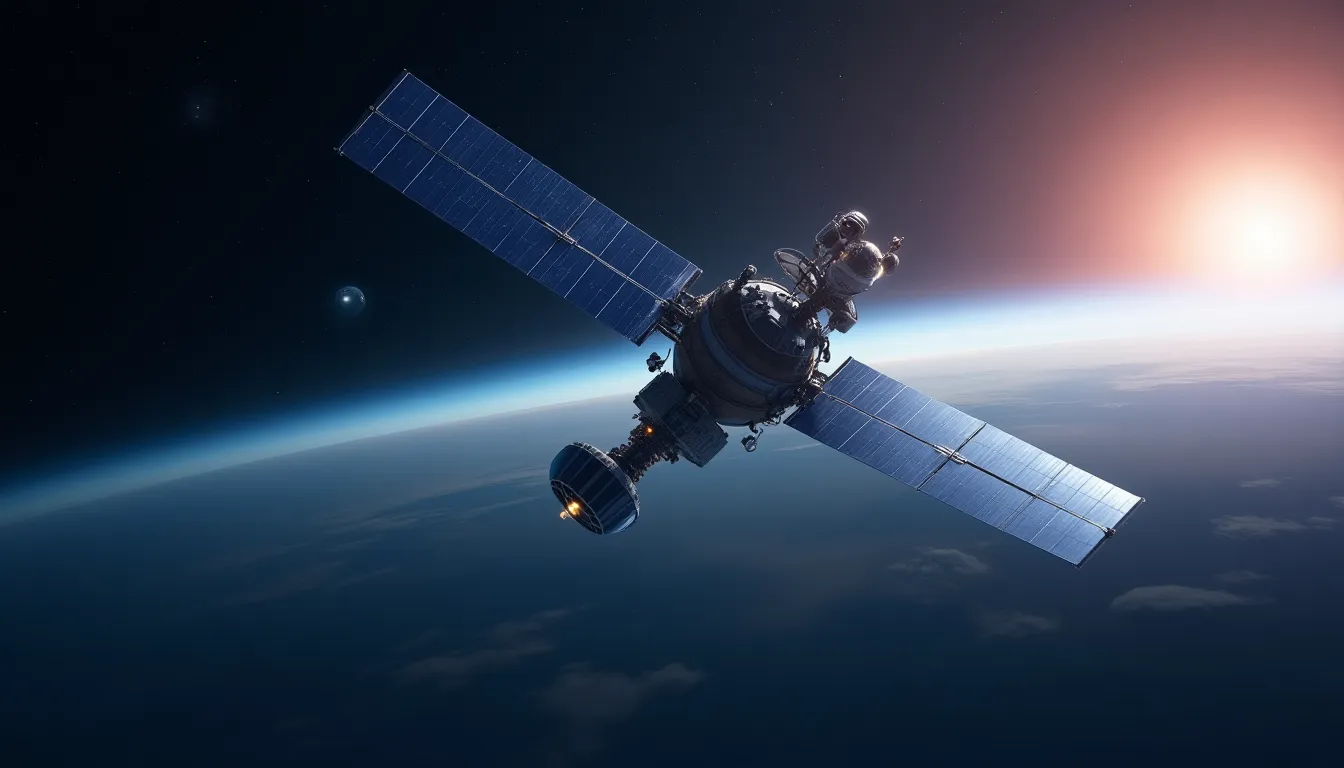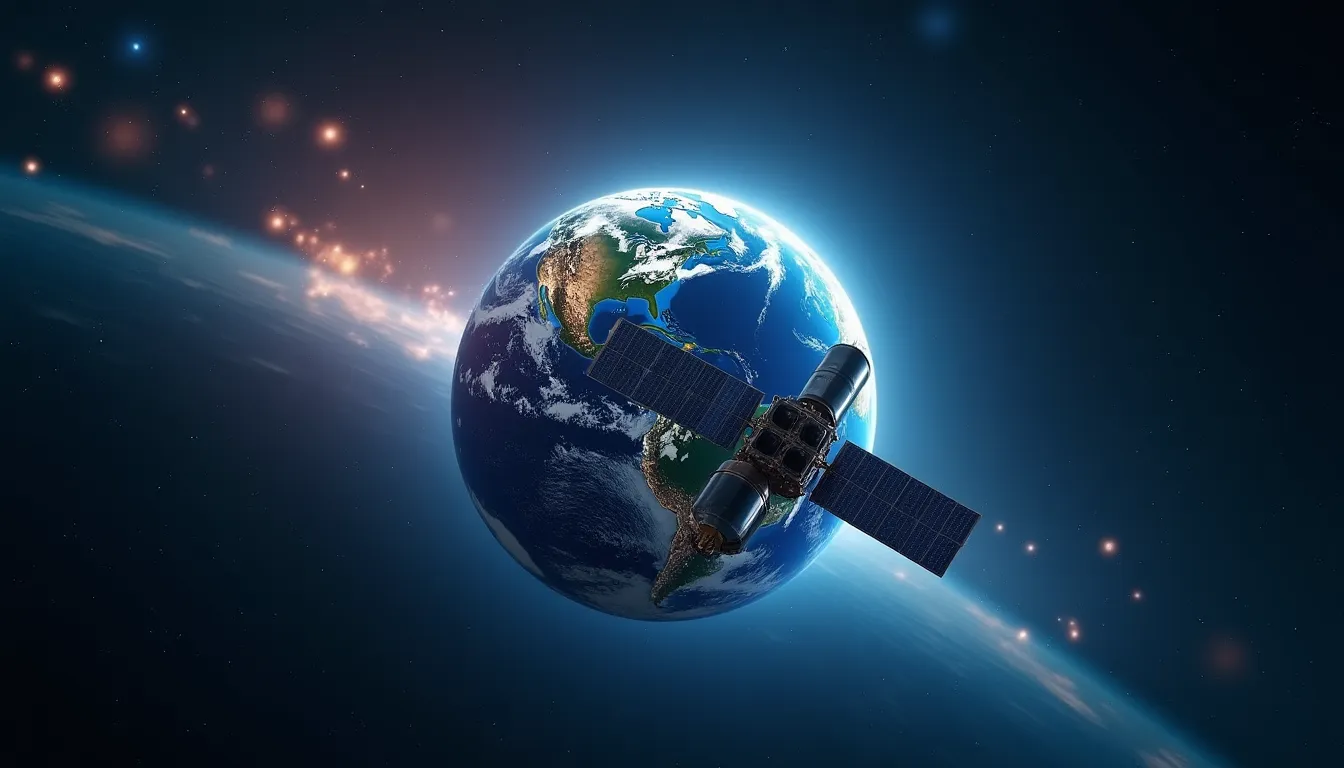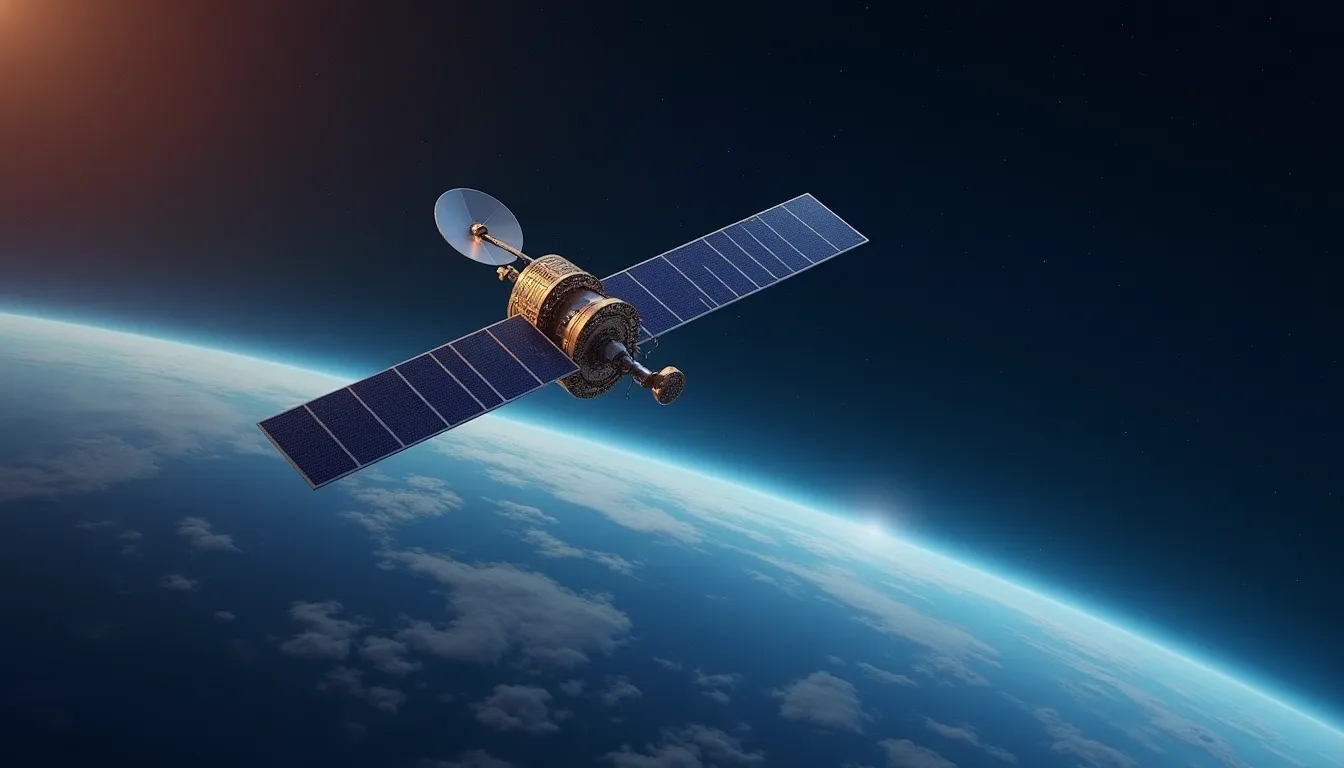The satellite industry is undergoing rapid transformations, driven by advancements in artificial intelligence (AI), cost-effective launch technologies, and innovative communication systems. These developments not only enhance operational efficiency but also expand the scope of satellite applications, from Earth observation to interplanetary communications. As industry leaders converge on these innovations, the implications for aerospace, defense, and technology sectors are profound.
AI Integration in Satellite Operations
The integration of AI into satellite operations is revolutionizing how data is managed and utilized. Industry leaders from companies like Eutelsat, Space42, SKY Perfect JSAT, and Spire Global emphasize AI’s role in improving efficiencies and enabling new services.
AI technologies streamline mission planning and data processing, allowing operators to quickly tailor satellite data products to meet customer demands. For instance, AI algorithms can analyze vast datasets, optimizing resource allocation and enhancing operational responsiveness. Moreover, advanced sensor modules, such as the Advanced Sensor Module featuring a 9-DOF MEMS IMU, play a crucial role in providing real-time data for AI-driven analytics, enabling more precise monitoring and decision-making in satellite operations.
Cost-Effective Earth Observation
The Earth observation segment is witnessing a significant shift towards smaller, more efficient satellites. Constellr, a notable player in this space, has successfully launched two small satellites and is preparing to deploy a third. These satellites, weighing between 100-200 kg, deliver performance that rivals larger counterparts while operating at less than 1% of the cost.
This trend is facilitated by reduced launch costs and technological advancements that make Earth observation more accessible. AI is integral throughout the value chain, from mission planning to data processing, enhancing the speed and scalability of data acquisition. The Advanced Navigation System, utilizing high-performance MEMS accelerometers, is instrumental in ensuring precise satellite positioning and stability, which are essential for accurate Earth observation data.
Interplanetary Internet Development
As humanity looks beyond Earth, the development of interplanetary communication systems becomes critical. The ISS National Lab has reported significant progress on Delay and Disruption Tolerant Networking (DTN) technology, which is vital for reliable data transmission across the solar system. Spatiam Corporation’s commercial platform, tested aboard the ISS, aims to ensure seamless communication despite the challenges posed by long distances and intermittent signals.
This technology will be foundational for future missions to the Moon, Mars, and commercial space stations, facilitating real-time data exchange and operational coordination. As space exploration becomes increasingly ambitious, the need for robust communication systems will drive innovations in satellite technology.
Recent Satellite Launches
The satellite launch landscape remains vibrant, with several noteworthy missions recently executed:
- SpaceX successfully targeted a launch on October 30, 2025, deploying 28 Starlink small satellites (Group 11-23) into low Earth orbit from Vandenberg Space Force Base using a Falcon 9 rocket. This mission marked the 29th flight of the Falcon 9 first stage booster, showcasing the reusability and operational maturity that SpaceX has achieved.
- The Japan Aerospace Exploration Agency (JAXA) launched the HTV-X1 cargo vehicle to the International Space Station (ISS) on October 25, 2025, utilizing an H3 rocket. This launch demonstrates ongoing international collaboration in space logistics and the capability to support ISS operations.
Defense Satellite Communications and Security
The defense sector is increasingly reliant on satellite communications, with forecasts indicating significant growth in this area. The integration of hypersonic missile tracking capabilities into defense satellite systems is becoming a priority as nations adapt to emerging threats. For instance, European defense strategies are evolving in response to challenges posed by adversarial satellite capabilities, particularly from entities like Russia that threaten UK assets.
The need for enhanced security in satellite communications is paramount, and innovations such as the YWJ01ZB150 System, a professional gyro theodolite series, offer reliable azimuth determination, aiding in the secure positioning of defense satellites.
Satellite Ground Infrastructure Innovation
As competition intensifies, satellite operators are innovating their ground infrastructure to enhance future readiness. Systems like Intuition represent a significant advancement, providing a secure and scalable ground system designed to evolve satellite networks and infrastructure.
These innovations are critical in maintaining operational efficiency and enhancing the capability to respond to the evolving demands of satellite communications and data processing. By leveraging advanced technologies, operators can ensure their ground systems are capable of supporting next-generation satellite architectures.
Conclusion
The satellite sector is at a pivotal juncture, marked by the integration of AI, the rise of cost-effective small satellites, and advancements in communication protocols essential for deep-space exploration. As these technologies evolve, they not only redefine the capabilities of satellite systems but also expand the horizons for aerospace and defense applications. The future promises a landscape where satellite technology plays an even more integral role in global connectivity, security, and exploration.
References
-
SpaceX moves Starlink Group 11-23 smallsats launch to Friday from … (news.satnews.com) - 10/31/2025 On Thursday, October 30, SpaceX’s Falcon 9 is targeting the launch of 28 Starlink smallsats Group 11-23 to low-Earth orbit from Space Launch …
-
October 2025 - Spaceflight Now (spaceflightnow.com) - 10/31/2025 SpaceX launches 29 Starlink satellites on Falcon 9 rocket from Cape Canaveral · Blue Origin details lunar exploration progress amid Artemis 3 contract shakeup.
-
Advancing Technology for Interplanetary Internet - ISS National Lab (issnationallab.org) - 10/30/2025 ISS National Lab-sponsored research paves the way for future space communications—learn more in the latest issue of Upward magazine. October 30, 2025.
-
What’s Happening in Space Policy October 26-November 1, 2025 (spacepolicyonline.com) - 10/27/2025 Launch of JAXA’s HTV-X1 cargo vehicle to the ISS on an H3 rocket, October 25, 2025 EDT (October 26 in Japan). Screenshot. Another Russian …
-
Space Brief 25 Oct 2025 - KeepTrack (keeptrack.space) - 10/25/2025 Today’s brief covers significant growth forecasts for global defense satellite communications, the integration of hypersonic missiles, …
-
Space Brief 24 Oct 2025 - KeepTrack (keeptrack.space) - 10/24/2025 Today’s Space Brief covers China’s latest satellite launch, Russian threats to UK satellites, European defense strategies, and upcoming …
-
Space in focus: The rise of Earth Observation – and other news to … (www.weforum.org) - 10/14/2025 Releasing on October 15 2025. The first 10 Emerging Technology Solutions for Planetary Health report will spotlight technology solutions that …
-
Top Stories for the week of October 10, 2025 - Via Satellite (www.satellitetoday.com) - 10/10/2025 Satellite operators and service providers face growing competitive and operational pressures. That’s why we developed Intuition, a secure, …
-
Satellite’s AI Future: The Big Debate | October/November 2025 (interactive.satellitetoday.com) - 10/7/2025 Experts from Eutelsat, Space42, Sky Perfect JSAT, and Spire Global weigh in on how AI will impact satellite operations and services.
-
What’s Up: October 2025 Skywatching Tips from NASA (science.nasa.gov) - 9/30/2025 What’s Up for October? A Supermoon takes over, the Draconid meteor shower peeks through, and the Orionid meteors sparkle across the night sky.



